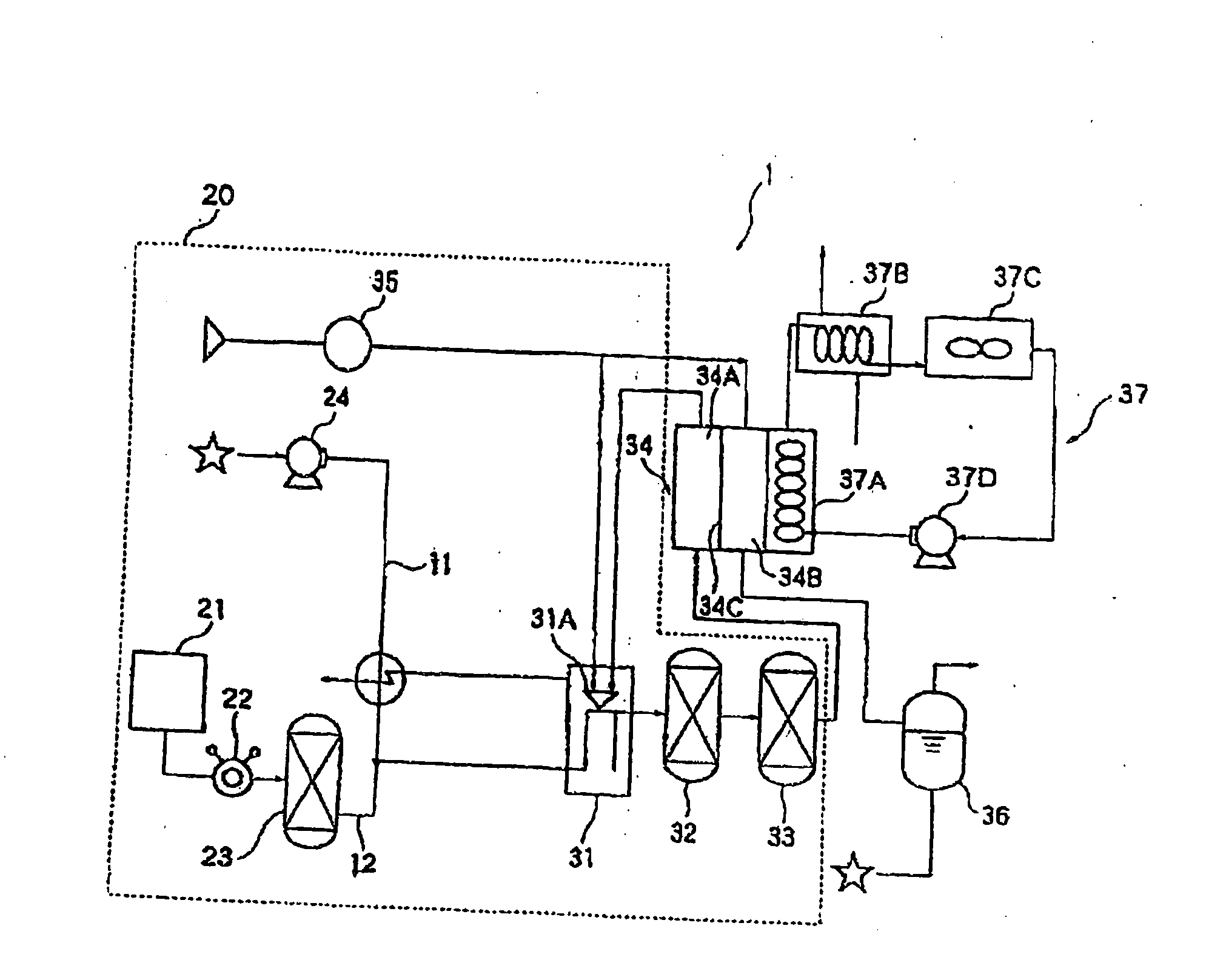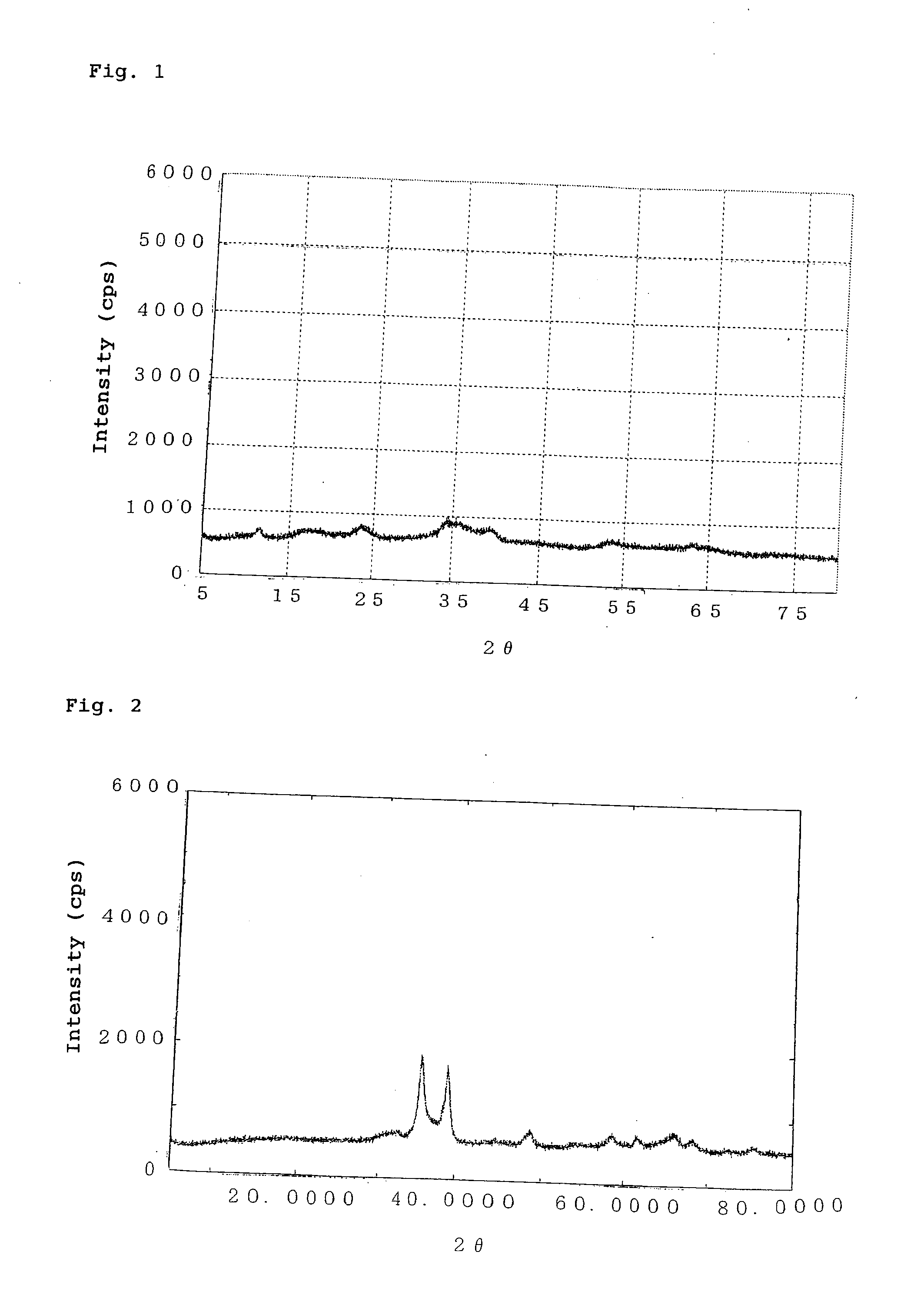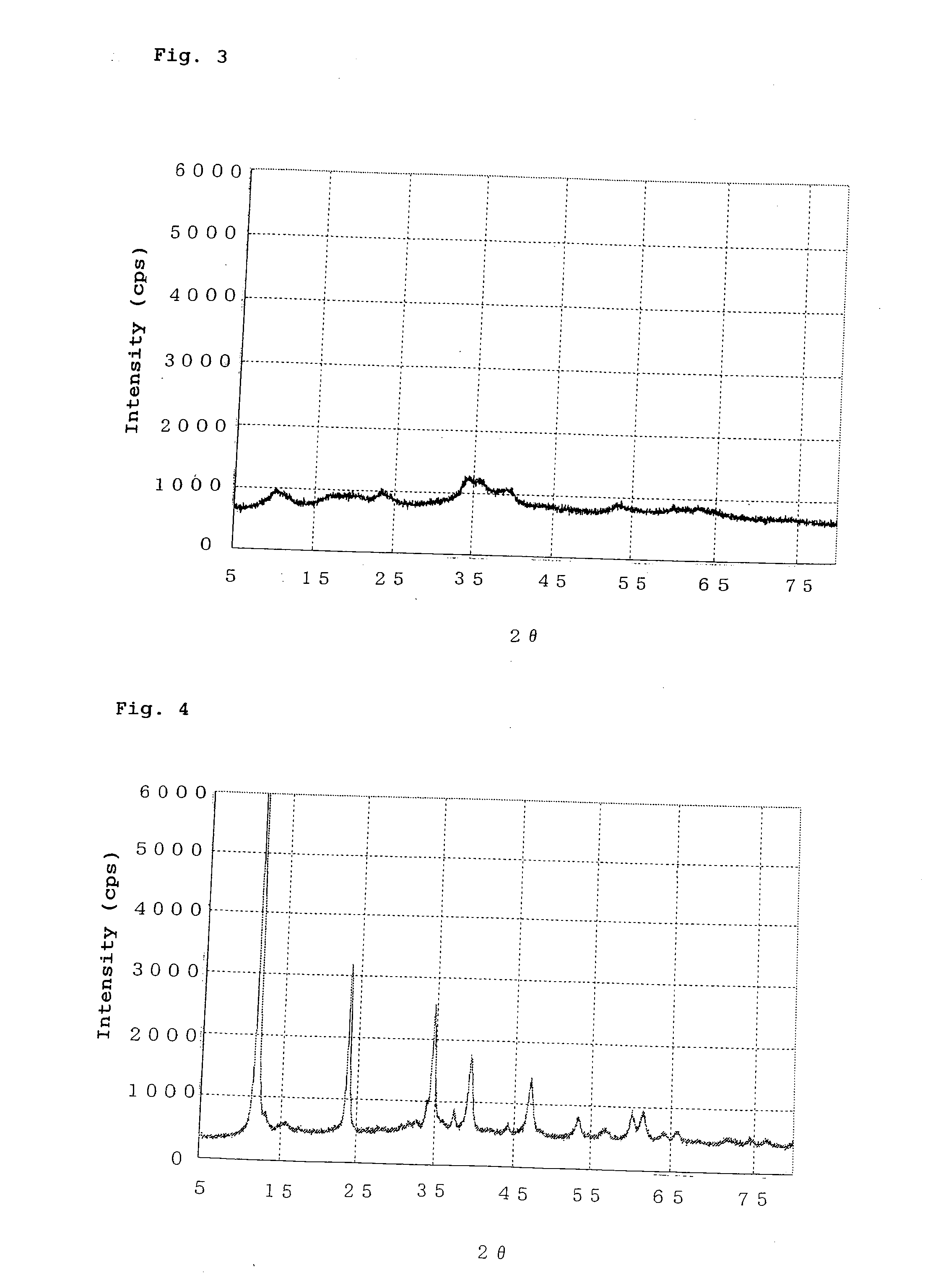Catalyst precursor substance, and catalyst using the same
a catalyst and precursor technology, applied in the field of catalyst precursor substance, can solve the problems of insufficientness of the above-disclosed catalyst, likely impairment of copper-zinc-aluminum catalyst, etc., and achieve the effect of suppressing activity and high activity
- Summary
- Abstract
- Description
- Claims
- Application Information
AI Technical Summary
Benefits of technology
Problems solved by technology
Method used
Image
Examples
example 1
[0093]Copper nitrate trihydrate (9.4 g), zinc nitrate hexahydrate (3.7 g), and aluminum nitrate nonahydrate (11.0 g) were dissolved in water (100 mL), to thereby prepare a solution (hereinafter will be referred to as “solution A”). Separately, a 2-mol / L sodium hydroxide solution was prepared. Solution A and the sodium hydroxide solution were simultaneously added dropwise to a container containing water (50 mL, 50° C.). During dropwise addition, the temperature of a mixture was maintained at 50° C. while the resultant precipitate was stirred, and the dropwise addition rate of the sodium hydroxide solution was regulated so that the pH of the mixture was 9.5 to 10.0. After aging of the resultant precipitate for three hours, the precipitate was filtered and thoroughly washed with water. The thus-recovered precipitate was dried at 120° C. and then subjected to X-ray diffractometry. The thus-dried product exhibited broad peaks at interplanar spacings d (Å) of 5.07 Å, 3.70 Å, 2.61 Å, 2.27 ...
example 2
[0094]The procedure of Example 1 was repeated, except that the pH of a precipitate mixture was maintained at 9.0 to 9.5, to thereby prepare a catalyst precursor. The catalyst precursor exhibited broad peaks at interplanar spacings d (Å) of 8.84 Å, 5.15 Å, 4.33 Å, 3.72 Å, 2.60 Å, 2.29 Å, and 1.71 Å. The catalyst precursor also exhibited a peak (at d=2.52 Å) attributed to a small amount of copper oxide. FIG. 3 shows the X-ray diffraction pattern of the catalyst precursor. The catalyst precursor (dried product) was calcined at 350° C. for three hours, to thereby yield a catalyst. The catalyst obtained through calcining was found to contain copper oxide in an amount of 56.0 mass %, zinc oxide in an amount of 18.3 mass %, and aluminum oxide in an amount of 25.7 mass %. The catalyst obtained through calcining exhibited an X-ray diffraction pattern similar to that of the catalyst of Example 1.
example 3
[0095]The procedure of Example 1 was repeated, except that copper nitrate trihydrate (9.5 g), zinc nitrate hexahydrate (1.8 g), and aluminum nitrate nonahydrate (14.7 g) were employed, and that the pH of a precipitate mixture was maintained at 8.5 to 9.0, to thereby prepare a catalyst precursor. The catalyst precursor exhibited an X-ray diffraction pattern similar to that of the catalyst precursor of Example 2. A catalyst obtained through calcining of the catalyst precursor was found to contain copper oxide in an amount of 55.7 mass %, zinc oxide in an amount of 9.9 mass %, and aluminum oxide in an amount of 34.4 mass %. The catalyst obtained through calcining exhibited an X-ray diffraction pattern similar to that of the catalyst of Example 1.
PUM
| Property | Measurement | Unit |
|---|---|---|
| pH | aaaaa | aaaaa |
| specific surface area | aaaaa | aaaaa |
| specific surface area | aaaaa | aaaaa |
Abstract
Description
Claims
Application Information
 Login to View More
Login to View More - R&D
- Intellectual Property
- Life Sciences
- Materials
- Tech Scout
- Unparalleled Data Quality
- Higher Quality Content
- 60% Fewer Hallucinations
Browse by: Latest US Patents, China's latest patents, Technical Efficacy Thesaurus, Application Domain, Technology Topic, Popular Technical Reports.
© 2025 PatSnap. All rights reserved.Legal|Privacy policy|Modern Slavery Act Transparency Statement|Sitemap|About US| Contact US: help@patsnap.com



